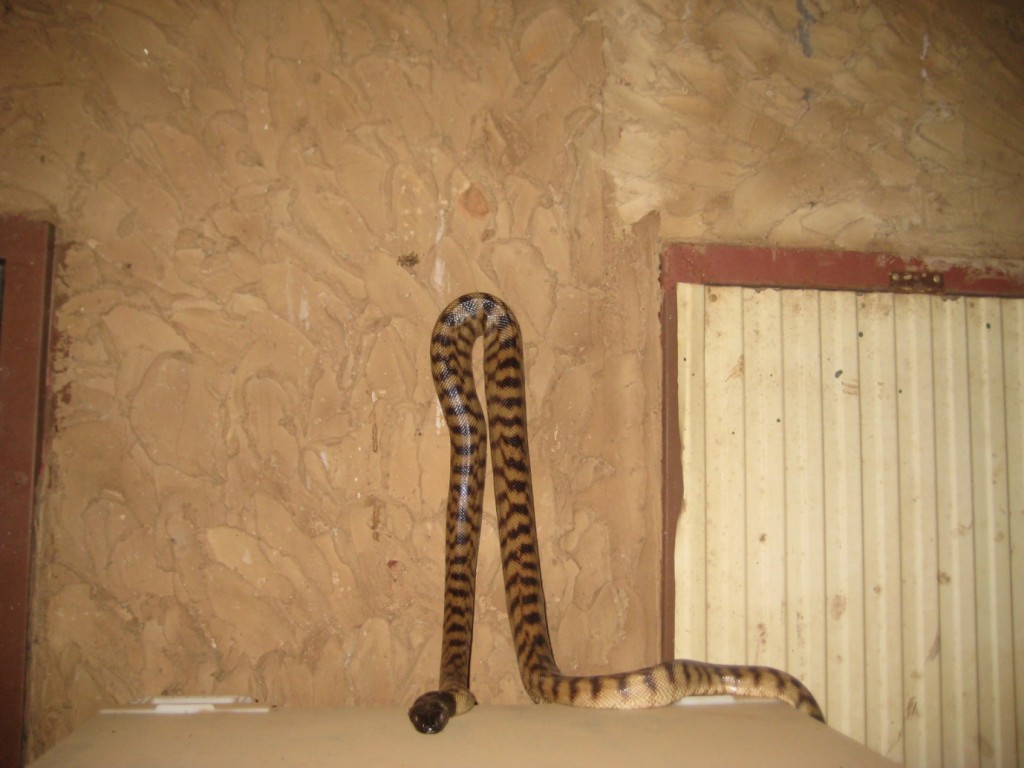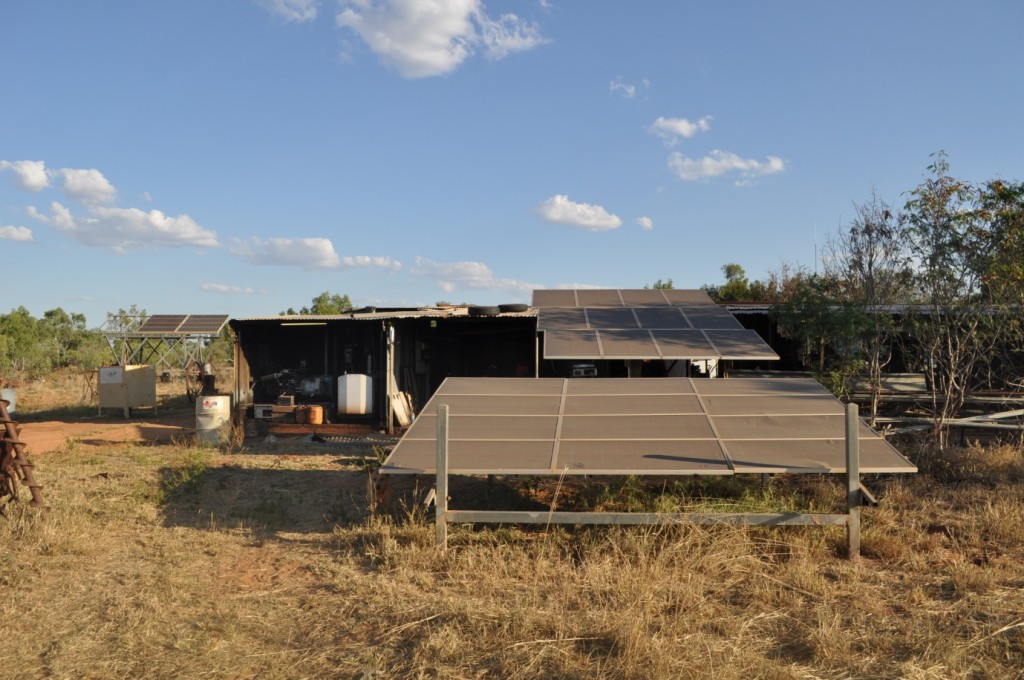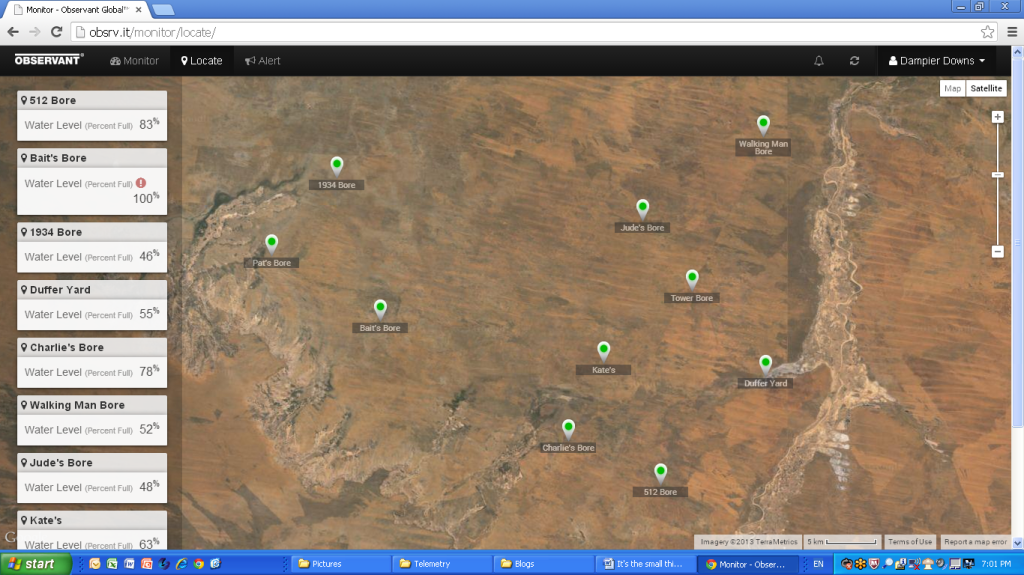It’s the small things
Host: Dampier Downs Station
Written by Anne Marie Huey – Station Manager, Dampier Downs.
One of the major events to happen at Dampier Downs recently was the advent of 24 hour power. This was achieved by connecting the solar system to the generator. This means that during the day the sun charges the batteries which power all our electrical needs. If the load becomes too great, for example someone is welding, the generator automatically kicks in to take up the load. At night, if the batteries are too low, the generator also automatically starts up, charges the batteries and automatically turns itself off once the batteries are re-charged.
I posted this happy event on my Facebook page and one of my friends commented that it is the small things in life that make all the difference. I’ve no doubt she’s right but, believe me, having 24 hour power is no small thing. The difference this has made is huge.
No longer is it necessary to get dressed in the dark because there are no lights in the bedroom. No longer do we need to find a torch and head over to the generator shed late at night to shut it all down, wondering if tonight will be the night the brown snake has decided to move back in. Now we can confidently store items like botulism vaccine for our cattle, safe in the knowledge that the fridge will be running all day and therefore it will be kept at a constant temperature and won’t spoil. Now it doesn’t matter if we fall asleep in front of the TV after a long day, as we don’t wake up in 2 am to the sudden realisation that the generator is still running, burning diesel for no good reason.
 Black headed python at Pete’s house – at least this one is friendly.
Black headed python at Pete’s house – at least this one is friendly.
It takes a lot of diesel to run a cattle station and this was never more obvious than this year. We have a 20,000 litre tank at the station, which generally lasts us a good few months. As we are at the end of 110 kilometres of dirt road, we stock up before the wet season before the road becomes impassable to the fuel truck. Last year was no exception – however nobody told the wet season.
The last wet was very unusual. Normally it rains from around January to April, but this time it didn’t start until March and kept raining till July. Naturally, we ran out of diesel. Normally this wouldn’t be a problem as we would call in the fuel truck, but every time we scheduled a delivery it would rain and the road was out. This meant that we had to rely on the 600 litre fuel tank that could be mounted on the back of the Toyota. Unfortunately, 600 litres doesn’t go all that far when you are running a grader, station vehicles and a generator, so we were constantly doing the 250 kilometre round trip to the nearest roadhouse (not town) to refuel.
While this meant that everyone was able to maintain their ice coffee quotas, it also meant a lot of unnecessary an expensive wear and tear on vehicles. Believe me, slogging through 110 kilometres of mud with 600 litres of fuel on the back is not fun. So next time someone tells you having 24 hour power is a small thing, try living without it for a month.

The other great technological advance we have made lately is installing telemetry units on a number of our bores. Telemetry is a fantastic system that allows us to monitor the level of water in our tanks from the homestead – or anywhere in the world with an internet connection for that matter.
Out here, water really is life. Last summer it reached 48o on the veranda. That is seriously hot. Dehydration is a real risk for people and animals alike. Because of this, during the dry season there is a bore run going on pretty much every day. If there is a problem and cattle run out of water the effects can be devastating.

Our homestead is located pretty much in the centre of the station. The furthest bore to the west is about 50 kilometres from the house, and the furthest to the north is about 70 kilometres. The western bore run can take up to five hours, depending on the state of the road and the number of detours required. Obviously, checking the bores is a time consuming job that is again hard on vehicles. With telemetry, we can do the bore run over a cup of tea in the kitchen in the morning.

Information is fed back to the homestead using radio waves. At a click of the mouse we can pull up any bore on the place and check the level of water in the tank. If there has been a dramatic drop over night there could be a problem and we know we need to take a drive and check it out. Common problems include busted pipes, broken trough floats, leaking tanks or even the cattle licking the tap at the bottom of the tank and turning the water off (bizarre but true).
Having this information is a huge relief as before we had telemetry it could have been two or three days before we got back to check. If a problem occurred just after we had visited, we had no way of knowing until we got back a few days later. Just as importantly, we are now able to eliminate a lot of unnecessary bore runs. A lot of the time you would arrive at a bore only to find everything was fine, the tank was still full and the entire trip was largely a waste of time and diesel. Now we can make informed decisions as to where and when we need to go, safe in the knowledge our cows are happy and well looked after. After all, when all is said and done, that’s really why we’re here.
